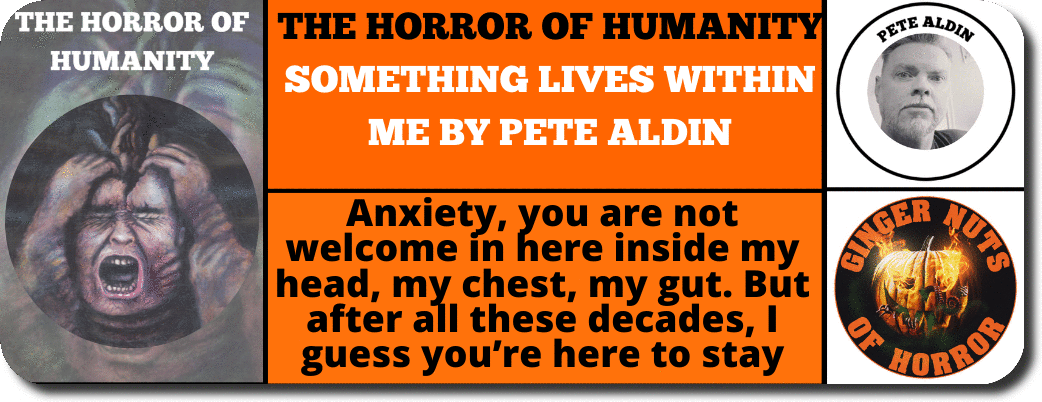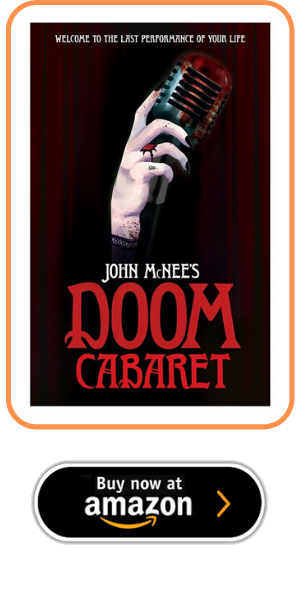|
Something lives within me. This thing is me, but also not me. It has its own will, its own timetable, its own triggers, and strategies and agenda – and behaviour. Daily, it makes itself known to me – sometimes by whispering thoughts and questions that rob me of my peace; other times by silently taking hold of my gut and twisting it in knots, or swelling up within my chest so that my heart beats faster and my breath comes harder. Anxiety, you are not welcome in here inside my head, my chest, my gut. But after all these decades, I guess you’re here to stay … Somethings live in other people too. They may be versions of the dread beast Anxiety. Or those somethings might have other names, names like Depression, Psychosis, Disorder. If the people with those somethings are anything like me, their somethings are not welcome; those somethings are pains in the arse at best, goal-destroying and even harmful at worst. It used to be that Anxiety tormented and controlled me, but I am one of the fortunate who can say thank God that’s no longer the case. It niggles and undermines, certainly. Occasionally, it rails and shouts and flares. But torment, me? Most days in my year, no. I’m the beneficiary of an amalgam of practises that have helped me gain and keep the upper hand. (Most days). One of the top items on the list of practices (and influences) that have helped me manage my anxiety is a simple one. Narrative. And specifically, the kinds of narrative we find in weird fiction (horror, fantasy, scifi, and the mighty spawn of all their intermarriages). As a reader/watcher, horror narratives in particular have provided valuable things for me. The normalising of my experience. Also catharsis. Ways to process things. A release through entertainment. And the ability to battle vicariously as I watch characters do it on the page or the screen. As an author, I usually write thrillers that skate along the boundaries of horror, leaning on its themes and tropes. My first novel was a werewolf thriller, and I wrote it for two reasons. Firstly (and perhaps arrogantly), I was tired of the insipid stuff that abounds in the genre and I wanted to write a dark and brutal book that I’d like. Secondly, I am fascinated with this underpinning theme of classic werewolf tales: there is something inside us which we can’t control. For those of us with mental health conditions, this idea is fact, not fiction. (There exists another resonant theme within some great horror tales: something I can’t control lives inside the person I love. But for this article, I’ll leave that one be.) Although this theme was in the back of my mind as I wrote Black Marks, please don’t get me wrong. The book is not a parable or diatribe about mental illness. It’s primarily a thriller about four people who are driven by things within them. (The lycanism is just part of the fun!) Jake is driven by a deep anxiety to make recompense for the bad things he and his ‘alter-ego’ have done. Gwen is driven by career depression and desperation to escape the corner she’s painted herself into. Carter is tormented by the need for revenge, believing it will expunge his grief and set things right. And Eddie, well, Eddie’s a sociopath (and a werewolf … not a great combination for the people around him!). I’ve had a few people write to me and comment on how the story helped them process some aspect of their own daily battle with their something. Very gratifying. But there are thousands of stories out there that do the same: we all benefit from the weird tale because it helps us see things differently, clearly and realistically. Realistically? Sure? One of the things I admire most about the genre is its refusal to tie up stories with pink bows and happily-ever-afters. The demon is not always defeated – or the demon is defeated but the bastard spawns more. The elasti-girl-blob thing inside “Rita” in the Doom Patrol series is not welcome to her, but it’s still there as much as she’d like to deny it (and because of it, she is continually invited to adopt a different set of values against which to measure herself). Wilkie Collins in Dan Simmons’ Drood doesn’t become the better man in the end, because he refuses to learn to overcome his obsessions. My opening page of Black Marks has Jake struggling against his something (and it fighting back); the final page has him struggling with it too (just in a different way). The monster, the something, doesn’t always go away. But I’m a firm believer that we can live with it, enjoy life despite of it. As I said, much horror refuses to paint the happy ending, but sometimes it does paint a better ending, or at least a better continuing. A prime example of this is the Australian movie The Babadook. If you haven’t seen it, see it! At the end of that movie (SPOILER), we have a mother who has calmed the monster but without defeating it, who has found a way to live with it (and with her own grief and fear)th. Those somethings that are in us, the ones that won’t go away completely, we don’t have to feel shame about them. We can accept that it’s okay to have them there, but also believe that we can deal with them in ways so that our lives can contain more joy and peace and love and even challenge. They are not everything in life, though they insist at times that we believe that. They are not everything — and they are not all we are, not by a long shot. That ugly little something that lives within me? As far as I’m concerned, that sucker’s damned lucky to have such a fine home … Pete Aldin Pete Aldin’s day job involves raising the confidence levels of marginalised adults and equipping them to re-enter the workforce. As an author, he continues his depiction of mental health themes in the Doomsday’s Child series. In those novels and novelettes, main character Elliot is an army veteran whose brutal childhood and battlefield experiences have left him with PTSD, hyper-vigilance, and difficulty processing grief and empathy. What better backdrop against which to explore those issues than a good ol’ zombie apocalypse! Find Pete at www.petealdin.com, www.instagram.com/petealdin_author/, and www.amazon.com/Pete-Aldin/e/B06WRNVHJP/ Came Monsters (Doomsday's Child Book 2) by Pete Aldin Peace is merely the calm between storms … More than three years have passed since Elliot's friends took The Downs sheep farm from slavers. With Tasmania's deaders rotting away and the biker gangs destroyed by their own infighting, life within the farm's fences has been hard but peaceful. Now a new danger threatens the peace, one that can't be vanquished with blades or bullets, humanity's oldest adversary: disease. To save their home, Elliot and Angie must team up with two men they don't quite trust and cross into hostile territory for a secret government cache of medicines. There, they risk the attentions of a new and powerful enemy … and Elliot will come face-to-ugly-face with some very fresh and very hungry undead … ***** Came Monsters is the second novel in the Doomday's Child universe. ginger nuts of horror, the heart ond soul of horror promotionComments are closed.
|
Archives
April 2023
|










 RSS Feed
RSS Feed

